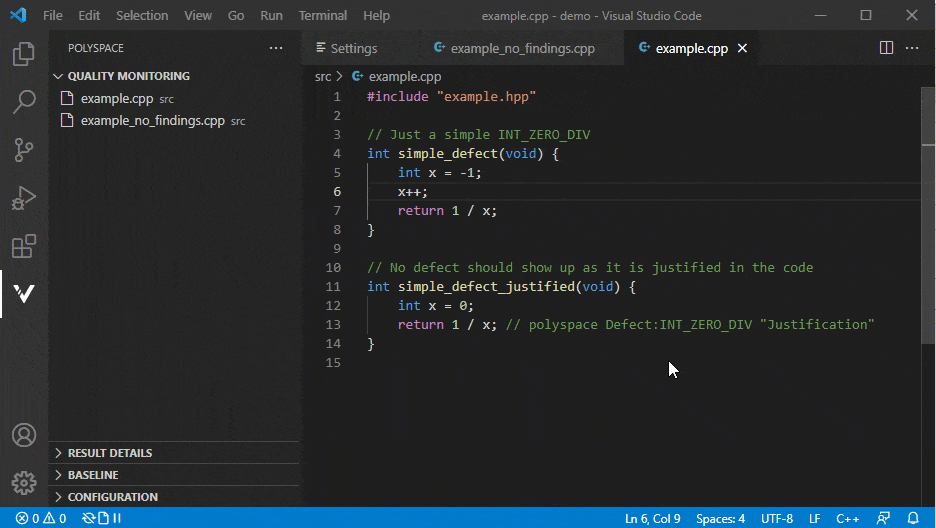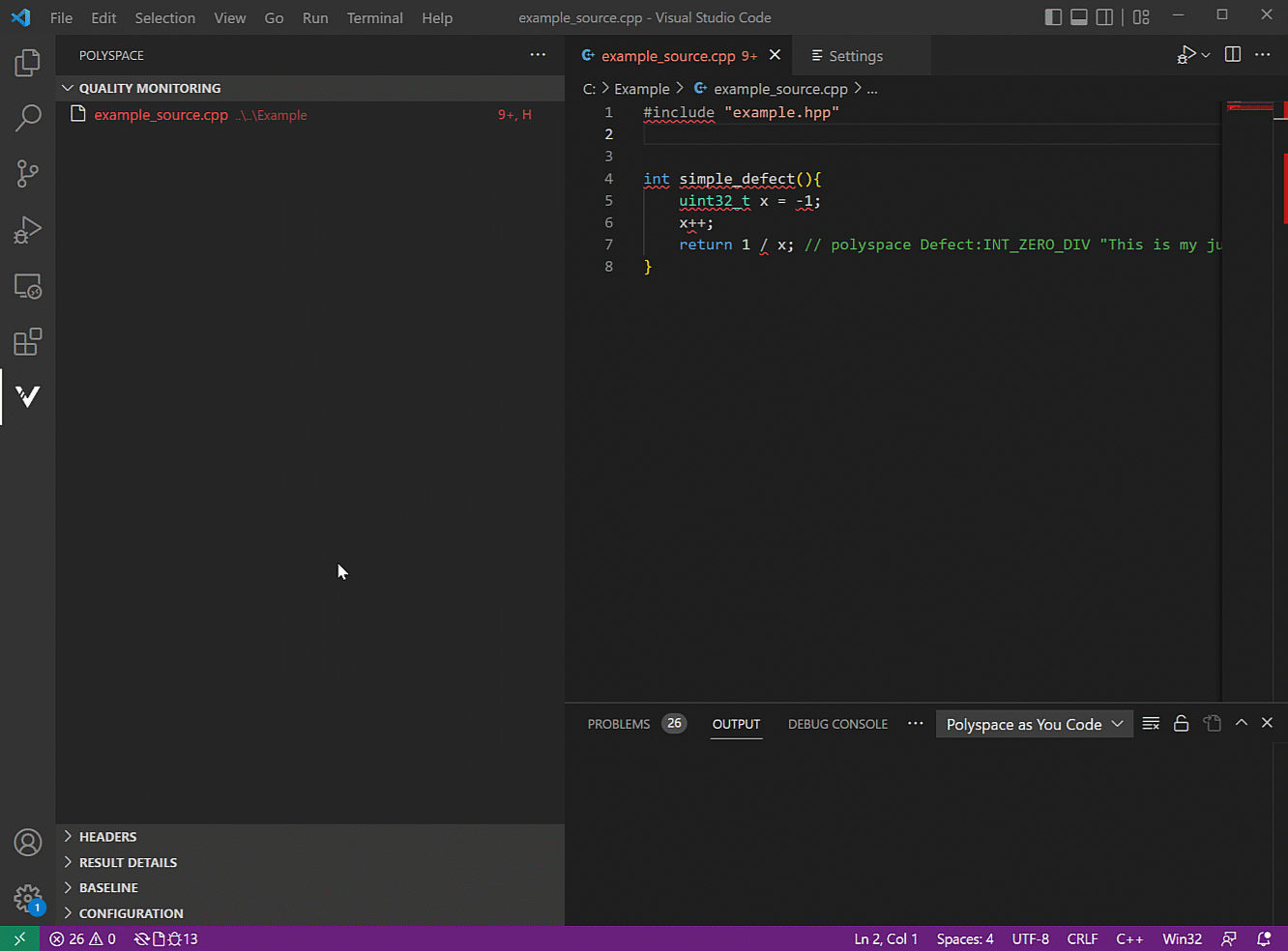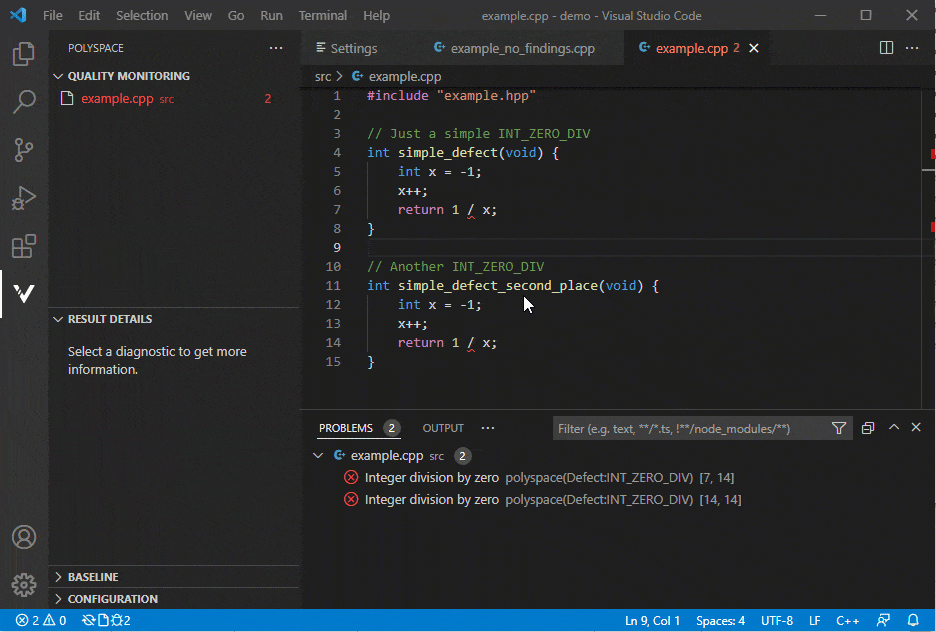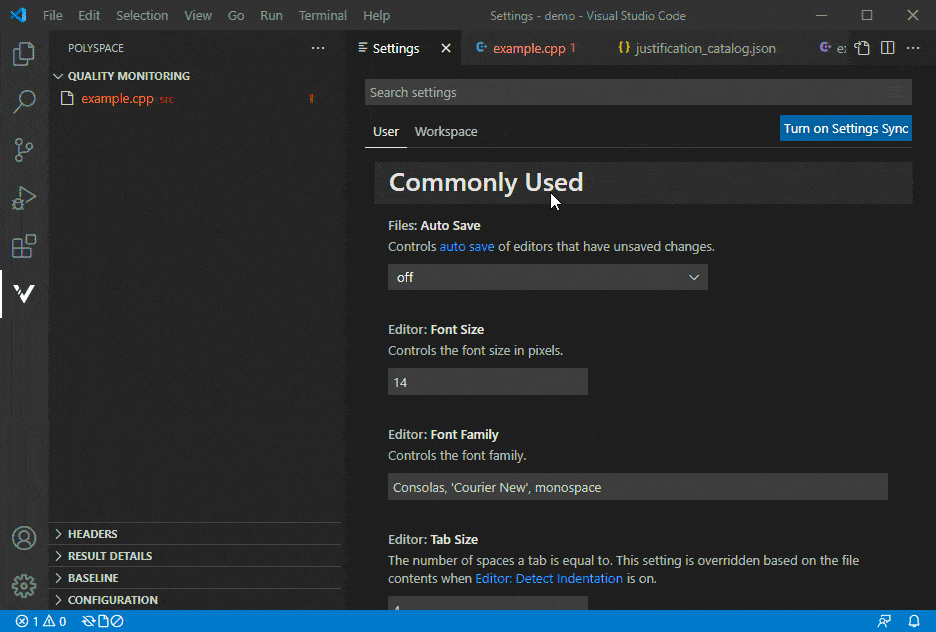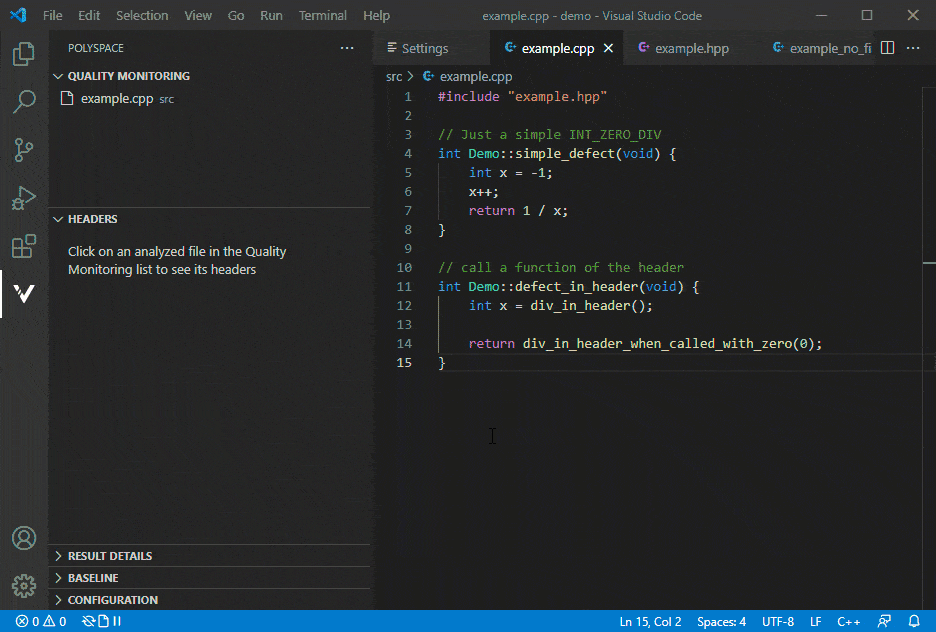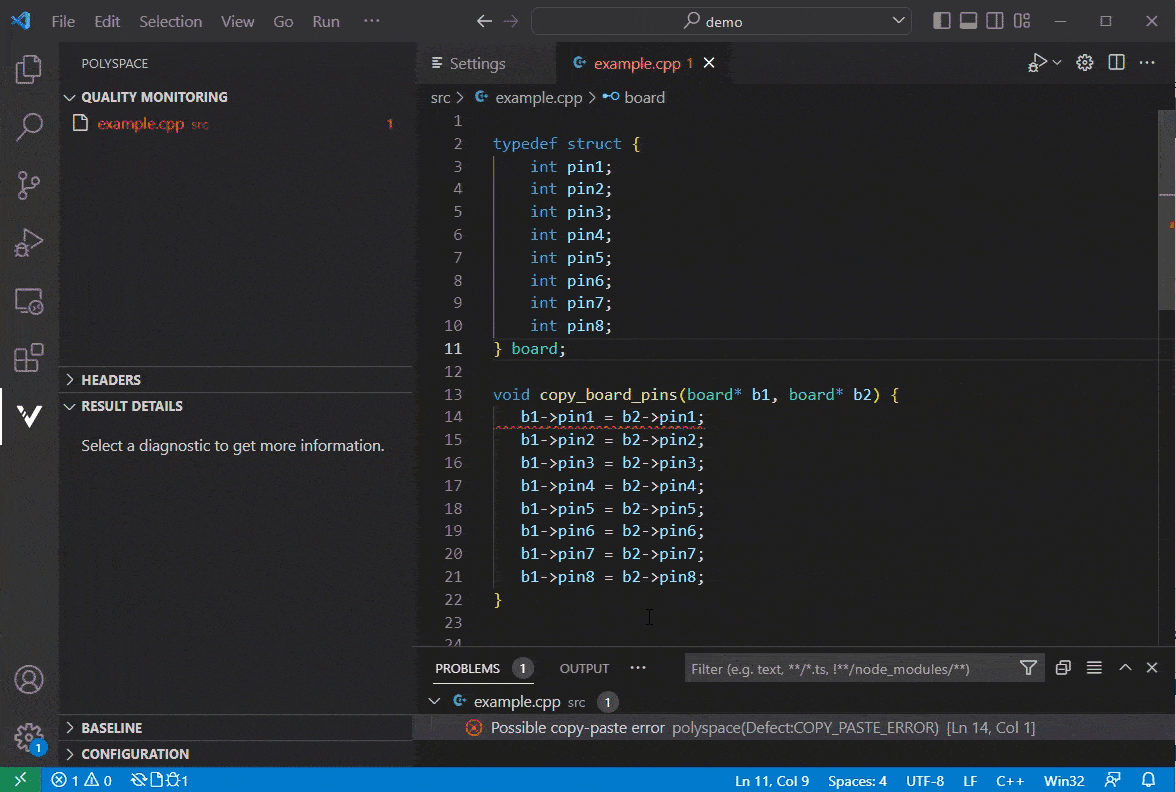Run and Review Results in Polyspace as You Code for Visual Studio Code
After you configure the Polyspace as You Code extension, you are ready to run an
analysis and fix or justify any findings. Before continuing this guide, confirm you have
added example.hpp and example_source.cpp to the
Quality Monitoring list.
Run Polyspace as You Code Analysis in Visual Studio Code
You can run an analysis in these ways.
If you set Analysis Of Files On Save, save your edited file to run an analysis.
Right-click a file and select Run Polyspace Analysis.
Manually add your file to the Quality Monitoring list and click the Run Polyspace Analysis button
 to analyze your file.
to analyze your file.
Click the Run Polyspace Analysis next to
example_source.cpp to run an analysis.
View, Fix, or Justify Findings
After Polyspace® runs the analysis, the filename in the Quality Monitoring pane is green if there are no findings and red if there are findings. A number to the right of the filename indicates the number of findings. View your findings in the Problems pane. Open the Problems pane by clicking the filename in the Quality Monitoring pane.
The Problems pane shows all findings as a list. Use the filter within the Problems pane to search for specific findings. Each finding contains a line and column number to indicate where the finding exists within your code.
After you run an analysis on the example code, open the results in the
Problems pane. Use the filter to search for
A16-2-3. There is one result on line five, column
five.
Click the finding in the Problems pane to open the file that contains the finding. Each finding is noted in the file with a red underline. Hover over the underlined sections of code to see a list of each finding associated with the problem.
In the example code, add this include on line two:
#include <cstdint>
A16-2-3 error on line five is no longer
present.With automatic analysis active, you can find and fix findings during the code authoring process. Each time you save changes, a Polyspace analysis begins in the background and displays any new findings or removes fixed findings from the list.
Justify Individual Findings
You can justify a finding from the Problems pane or from the location of the finding within the code.
Click on a finding in the Problems pane to change the red
error icon ![]() to a light bulb icon
to a light bulb icon ![]() . Click on the light bulb icon and select the
appropriate justification from the menu. This adds a comment to your code which you
can amend. Adding a justification removes the finding from the
Problems pane. To show the finding again, remove the
justification comment and perform the analysis.
. Click on the light bulb icon and select the
appropriate justification from the menu. This adds a comment to your code which you
can amend. Adding a justification removes the finding from the
Problems pane. To show the finding again, remove the
justification comment and perform the analysis.
Provide Justification Catalog
You can add a catalog of predefined justifications to Polyspace as You Code. The justification catalog allows you to select a prewritten justification instead of manually typing each justification comment.
Open the Visual Studio Code Settings and search for
polyspace.justification.catalog. Enter the path to your
justification catalog in the text box relative to the install location. The catalog
must be in JSON format. If you do not already have a justification catalog, use the
example JSON file.
example_catalog.json
{
"justifications": [
{
"family": "Defect",
"acronym": "INT_ZERO_DIV",
"comment": "This is my justification for division"
},
{
"family": "Defect",
"acronym": "INT_ZERO_DIV",
"comment": "Alternative justification for division"
}
]
}View Header Findings
When you analyze source files, any header file findings are shown in the Problems pane. If a header contains a finding, it is noted with a red H next to the source file in the Quality Monitoring list.
Click a header finding in the Problems pane to go to the
header file that contains the finding. To find which source file analysis caused the
header finding, click the light bulb icon ![]() next to the finding in the
Problems pane and then click the option to show details
about the finding.
next to the finding in the
Problems pane and then click the option to show details
about the finding.
Check for Potential Duplicate Code
Polyspace checks for potential copy and paste errors, duplicate code, and other code refactoring opportunities.
Click Possible copy-paste error in the
Problems pane to view more information in the
Result Details pane. Expand the
Traceback node to locate the duplicate sections occur and
view further details. To view the potential error in the Visual Studio Code peek window, point to Possible copy-paste error
in the Result Details pane and click the Toggle peek
view in source icon ![]() .
.

